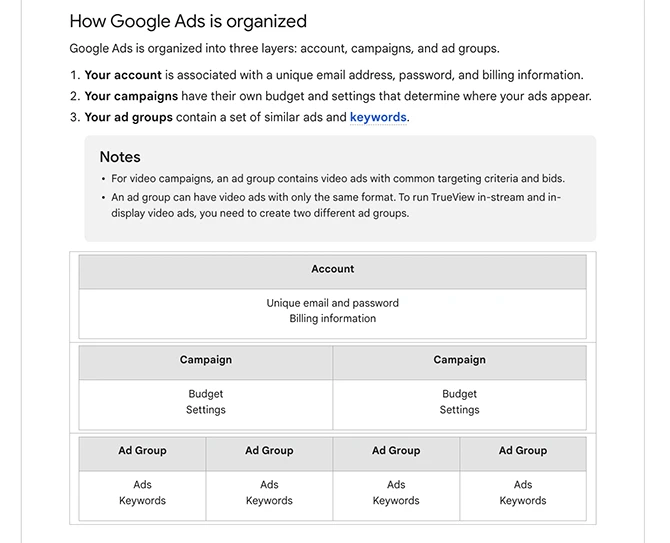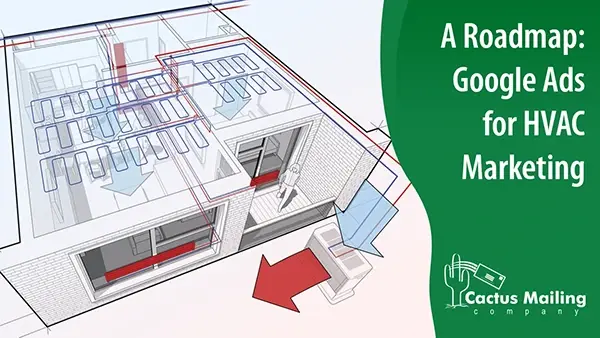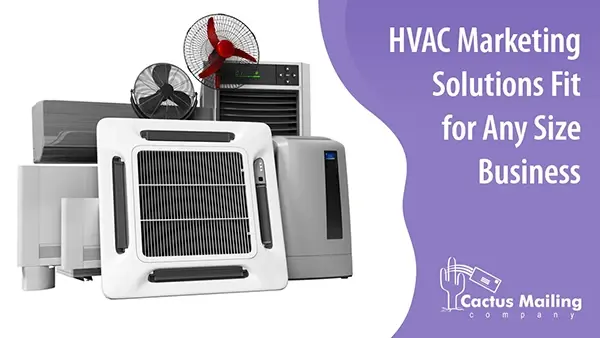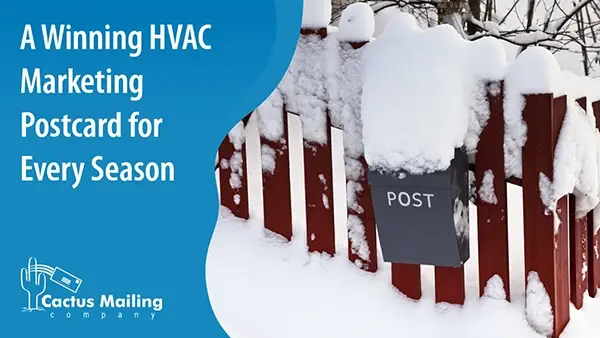We Are Here to Help!
What to Expect from Us:
No Pressure, Just Service!
Get no obligation pricing details and strategies that will work for your business.
Are you an HVAC business owner eager to expand your customer base and drive more leads? Then online advertising is a crucial tool for reaching potential customers effectively. Google Ads (formerly known as Google Adwords) provides a powerful platform to promote your HVAC services and attract targeted leads. This beginner's guide will outline the essential steps to kickstart your HVAC marketing campaign on Google Ads and help you maximize your ROI.
Set Clear Marketing Objectives
Before diving into Google Ads, it's important to define your business goals and marketing objectives. Are you aiming to increase brand awareness, generate leads, or boost sales? Understanding your objectives will guide your entire campaign and the strategies you implement.
Common HVAC marketing goals include focusing on metrics such as Click-Through Rate (CTR), conversion rates, inquiries, relevance scores, local visibility, and return on ad spend (ROAS) to measure success.
Setting marketing objectives involves a systematic approach to ensure clarity, relevance, and measurability. Here's a step-by-step guide:
- Align Your Marketing Goals with Your HVAC Business' Overall Strategy
- Consider what your HVAC company aims to achieve in terms of growth, revenue, market share, or brand positioning.
- Align marketing objectives to your overall business and marketing strategy. Ensure that the tactics you plan to employ for Google Ads support the larger strategic vision of the company.
- Define Specific and Measurable Objectives
- Use specific and measurable terms to define your HVAC advertising objectives. For example, instead of a vague goal like "increase service bookings," specify "achieve a 20% increase in sales within the next quarter."
- Ensure Objectives Are Achievable
- Establish key performance indicators (KPIs) for your PPC marketing such as conversion rates, click-through rates, sales figures, or brand awareness surveys, to measure progress toward each objective.
- Consider display ad past performance, market conditions, and the capabilities of your team when determining what is achievable. Set realistic goals that are attainable within the given timeframe and resources.
- Tailor Your Objectives to Your Target Audience
- Understanding your Google advertising audience helps in creating objectives that resonate with them and drive meaningful engagement. Align your objectives with the needs and preferences of your local services ads target audience.
- Set Time-Bound Goals
- Assign specific timeframes to your HVAC PPC marketing objectives. Creating a sense of urgency provides a clear timeline for assessing success. Similar to the previous example, “achieve a 20% increase in sales within the next quarter.”
Conducting Effective Keyword Research
Effective keyword research is crucial for building successful Google Ads campaigns. Start by identifying relevant keywords related to your HVAC business. Use keyword research tools to identify relevant and high-performing keywords with moderate competition.
Keyword research for HVAC Google Ads involves including relevant terms and phrases that a potential customer might use when searching for HVAC services. Here's a step-by-step guide:
- Focus on Your HVAC Business
- In your local search engine optimization (local SEO), only include the specific services you offer, target locations, and unique selling points.

- Identify Core HVAC Keywords
- Begin with broad, core keywords related to HVAC services, such as “HVAC services,” “AC repair,'' "heating and cooling," or "air conditioning installation." These terms lay the foundation for more specific variations.
- Utilize Keyword Research Tools
- Research tools such as Google Keyword Planner, SEMrush, or Ahrefs can help you identify relevant keywords, search volumes, and competition levels. Enter your core keywords to generate additional ideas for your HVAC ad.
- Incorporate Long-Tail Keywords
- Incorporate long-tail keywords, which are more specific and typically have lower competition in search results. For example, "emergency HVAC repair," "ductless air conditioning installation," or "furnace maintenance tips."
- Analyze Competitor Keywords
- Get insights into gaps in your keyword strategy by studying the search engine keywords your competitors are targeting. This can help you identify additional terms that may be relevant to your PPC ad audience.
- Group Keywords by Theme
- Organizing your keywords into thematic groups facilitates the creation of targeted HVAC ad groups. For example, create a PPC campaign for heating services, air conditioning services, maintenance, repairs, and so on.
- Consider Seasonal Keywords
- Take into account seasonal trends in HVAC services for your Google search ad. For example, during colder months, focus on keywords related to heating system maintenance, and during warmer months, emphasize air conditioning installation and repair terms.
- Identify Negative Keywords
- Identify and include negative keywords to filter out irrelevant HVAC SEO traffic. For example, if your HVAC business doesn't offer commercial services, you might add "commercial HVAC" as a negative keyword.
By following these steps, you can create a well-researched and targeted list of keywords for your HVAC Google Ads campaign, increasing the likelihood of reaching your desired audience and driving relevant traffic to your HVAC services. If you're interested in employing SEO services, check out Thrive Agency or SEO.com.
Optimizing Your Campaign Structure
Organize your Google Ads campaigns into logical groups to ensure a targeted approach with relevance. Consider creating distinct campaigns for various HVAC services or specific locations. For example, set up campaigns for "AC Repair," "Heating Installation," or "HVAC Services in [City]." This segmentation allows you to optimize each campaign based on specific goals and gives you separate data to measure their individual success.
Google Ad Groups and Ad Copy
Within each campaign, create ad groups around specific keywords related to the HVAC service or location. This allows you to tailor your PPC ad copy to match the search intent of potential customers. Write compelling ad copy that highlights your strengths or unique selling points, such as quick response times, competitive pricing, or exceptional customer service. Include relevant keywords in your headlines and descriptions to improve local services ad visibility and attract more qualified clicks.

For Example:
Ad Group: AC Repair
- Ad Copy: "Quick and Reliable AC Repair Services. 24/7 Emergency Response. Your Trusted HVAC Partner for Cool Comfort!"
Ad Group: Heating Installation
- Ad Copy: "Efficient Heating Solutions Tailored to Your Needs. Expert Installations for Cozy Winters. Get a Free Quote Today!"
Ad Group: HVAC Services in [City]
- Ad Copy: "Comprehensive HVAC Services in [City]. Trusted Experts for Installation, Repair, and Maintenance. Schedule Your Appointment Now!"
Budget and Bidding Strategy
Carefully determine your HVAC advertising budget based on your business goals. Start with a conservative budget and closely monitor campaign performance. Experiment with different bidding strategies, such as manual CPC or automated bidding, to optimize your display ad spend. Keep a vigilant eye on key metrics like cost per click (CPC), click-through rate (CTR), and conversion rate. This data-driven approach will empower you to make informed decisions and refine your bidding strategy over time.
Landing Page Optimization
When a potential customer clicks on your ads, they should be directed to a well-designed and compelling landing page. A landing page plays a critical role in turning interest into action. Planning your search ads landing page is a crucial component of a successful online HVAC PPC advertising strategy.
- Align the Landing Page with the Ad
Whether your PPC ad is promoting AC repair services, heating installations, or HVAC maintenance, the landing page should mirror the message and intent of the ad. Depending on your campaign, your landing page can be a dedicated page on your HVAC website or your Google My Business profile. Optimize your landing pages by making them laser-focused on the services or products highlighted in your ads. Relevance keeps visitors engaged and reduces bounce rates, indicating to search engines that your page provides valuable content.
- Develop Compelling Content and a Strong Call-to-Action
Your landing page content should be both informative and compelling. Articulate the key services your HVAC business offers while emphasizing the unique selling points that set you apart from the competition. Use engaging visuals and concise, persuasive language to highlight the benefits of choosing your services. Whether it's energy-efficient HVAC installations, 24/7 emergency repairs, or routine maintenance packages, clearly communicate how your offerings meet the needs of your target audience.
Make it easy for visitors to take the desired action by including a strong and visible call-to-action (CTA). Guides them to the next steps, whether it's scheduling a service, requesting a quote, or contacting your team.
- Ensure Your Contact Information is Easily Accessible
Your contact information should be easily accessible on your landing page, whether on your website or Google Business Profile. Whether visitors prefer to call, email, fill out a contact form, or send a message through social media, make these options readily available. Building trust is essential in the HVAC industry, and providing straightforward ways for customers to reach out fosters confidence in your business.

Implementing Google Analytics and Conversion Tracking for Insightful Decision-Making
The journey toward a successful Google Ads campaign begins with the effective implementation of tracking tools. Google Analytics, a powerful and comprehensive web analytics service, offers a wealth of data that can illuminate the performance of your advertising efforts. Integrating Google Analytics with your Google Ads account provides a holistic view of user behavior, helping you understand how visitors interact with your website after clicking on a Google ad.
By defining conversion goals, you can track specific actions that align with your business objectives. Whether it's monitoring form submissions, tracking phone calls, or gauging appointment bookings, these conversion goals enable you to measure the real impact of your campaigns beyond mere clicks. This data informs you about the effectiveness of your local service ads and guides strategic adjustments to enhance results.
Regular Review and Analysis for Continuous Improvement
The success of your Google Ads campaign lies not just in attracting clicks but in converting those clicks into valuable interactions and, ultimately, customers. The adage "what gets measured gets managed" holds true in the world of digital marketing. Regularly reviewing and analyzing campaign performance data is crucial for informed decision-making. Dive into metrics like click-through rate (CTR), cost per click (CPC), and conversion rate to gain insights into how well your ads are resonating with your audience.
Identify high-performing keywords, pinpoint successful Google ad copies, and understand user behavior on your landing pages. Armed with this information, you can identify areas for improvement and capitalize on what's already working well.

Ongoing Optimization: A Dynamic Approach
Google Ads demands ongoing optimization to stay competitive and effective. Embrace a dynamic approach by continually monitoring and adjusting your campaigns based on real-time performance metrics. A/B testing can be a powerful tool, allowing you to experiment with different ad variations, landing page designs, and targeting options.
Consider tweaking ad copy to enhance relevance or adjusting bid strategies to maximize return on investment. Unlike real time marketing where you make decisions on the fly, with Google display ads, you can experiment with different ad variations, landing page designs, and targeting options to maximize your campaign's success. Responsive adaptation of your Google local service to market trends, user behavior, and the competitive landscape positions your campaigns for sustained success.
Conclusion
Google Ads (formerly known as Google AdWords) presents a powerful opportunity for HVAC business owners to boost their online presence, attract more leads, and ultimately drive sales. By following these essential steps, you can launch a successful HVAC marketing campaign using Google Ads. Remember, by setting clear marketing objectives, conducting thorough keyword research, and structuring campaigns strategically, your HVAC company can create a solid foundation for your PPC campaign.
Embracing these strategies and maintaining a flexible, proactive approach to your Google local service ads can greatly enhance your chances of achieving your business goals. Stay focused on your marketing objectives, closely track performance metrics, and continually refine your strategies as needed to drive qualified leads and expand your HVAC business.
Our postcards have helped various businesses get leads, boost awareness, and grow revenue. Let us help you create a marketing postcard design that can achieve your marketing goals!

 Cactus Mail Team: Apr 01, 2024
Cactus Mail Team: Apr 01, 2024



 Nick Ryan
Nick Ryan
 Jill Brown
Jill Brown